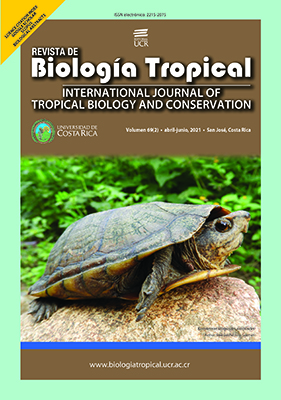Abstract
Introduction: Despite their importance in swimming performance and individual fitness, body shape and size variations in response to water flow velocity remain unknown for most migratory freshwater fishes in the Neotropics. Objective: Test the hypothesis of phenotypic variation in the size and body shape of two species of freshwater fishes that encounter changes in water velocity across their migrations in two rivers that belong to a single Neotropical basin. Methods: Landmark-based geometric morphometrics was used to study variations in body size and shape for the fish species Curimata mivartii and Pimelodus grosskopfii in lotic and lentic habitats of the Colombian Magdalena-Cauca Basin. Results: Individuals of C. mivartii from two lotic habitats were similar in size and both were significantly bigger than those from lentic habitats, whereas individuals of P. grosskopfii were similar in size in both habitats. Both species showed more streamlined bodies in lotic habitats and deeper body shapes in lentic habitats. Conclusions: Both species exhibit phenotypic changes in body shape concordant with previous predictions on morphological variations of fishes. This information is relevant to predict changes in response to environmental heterogeneity, especially those induced by anthropogenic activities that change the water velocity in the river.
##plugins.facebook.comentarios##

This work is licensed under a Creative Commons Attribution 4.0 International License.
Copyright (c) 2021 Juan P. Hincapié-Cruz, Edna J. Márquez



